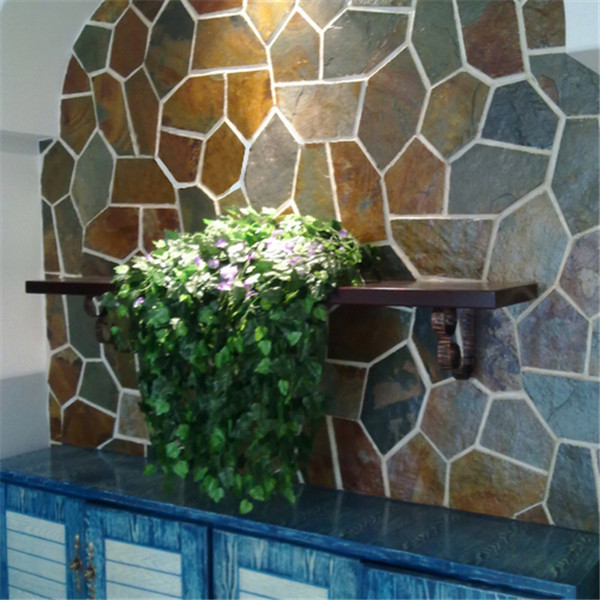Introduction
Bricks and pavers have been integral building materials for centuries, providing structural integrity and aesthetic appeal to countless architectural marvels. While traditional bricks and pavers made from natural clay or stone have long been favored, a modern alternative known as cultured brick and pavers has been gaining popularity in the construction industry. Cultured brick and pavers offer a unique blend of durability, versatility, and sustainability, making them a preferred choice for a wide range of projects. In this article, we will delve into the world of cultured brick and pavers, exploring their characteristics, benefits, and applications in contemporary construction.
Understanding Cultured Brick and Pavers
Cultured brick and pavers are manufactured products designed to replicate the appearance and texture of traditional clay bricks or natural stone pavers. These synthetic materials are typically made from a combination of cement, aggregates, pigments, and other additives, molded into various shapes and sizes to mimic the look of their natural counterparts. The production process involves mixing the raw materials, pouring the mixture into molds, and curing the products to achieve the desired strength and finish.
One of the key advantages of cultured brick and pavers is their consistency in color, texture, and size, which can be challenging to achieve with natural materials due to variations in clay or stone composition. This uniformity makes cultured brick and pavers ideal for projects that require precise design specifications and aesthetic appeal. Additionally, the manufacturing process allows for a wide range of customization options, including different colors, patterns, and surface finishes, giving architects and designers greater creative freedom in their projects.
Benefits of Cultured Brick and Pavers
1. Durability: Cultured brick and pavers are known for their exceptional durability and resistance to wear and tear. Unlike natural materials that may be prone to cracking, chipping, or fading over time, cultured brick and pavers are engineered to withstand the elements and maintain their appearance for years to come. This longevity makes them a cost-effective choice for outdoor applications such as driveways, walkways, patios, and pool decks.
2. Low Maintenance: Cultured brick and pavers require minimal maintenance compared to natural materials. They are easy to clean and maintain, typically requiring only regular sweeping and occasional washing with water or mild detergent to keep them looking their best. Additionally, cultured brick and pavers are less susceptible to staining from oil, grease, or other substances, making them an attractive option for high-traffic areas or commercial spaces.
3. Eco-Friendly: Cultured brick and pavers are environmentally friendly alternatives to natural clay bricks or stone pavers. The manufacturing process produces less waste and consumes fewer natural resources, reducing the environmental impact of construction projects. Additionally, some manufacturers offer recycled or sustainable materials in their cultured brick and pavers, further enhancing their eco-friendly credentials.
4. Versatility: Cultured brick and pavers come in a wide range of shapes, sizes, colors, and finishes, allowing for endless design possibilities. Whether you prefer a rustic look with textured surfaces or a modern aesthetic with sleek lines, there is a cultured brick or paver option to suit your style. These versatile products can be used in various applications, from traditional pathways and driveways to contemporary outdoor living spaces and commercial developments.
Applications of Cultured Brick and Pavers
1. Landscaping: Cultured brick and pavers are commonly used in landscaping projects to create stunning outdoor spaces that blend beauty and functionality. They can be used to build retaining walls, planters, edging, and pathways, adding visual interest and structure to gardens, parks, and public spaces. Manufactured Stone Veneer and pavers are also ideal for creating decorative features such as fire pits, water features, and seating areas, enhancing the overall aesthetics of the landscape.
2. Driveways and Walkways: Cultured brick and pavers are popular choices for driveways and walkways due to their strength, durability, and aesthetic appeal. They can withstand heavy vehicle traffic and foot traffic without losing their shape or color, making them a practical and long-lasting solution for residential and commercial properties. Cultured brick and pavers can be laid in various patterns, including herringbone, basket-weave, and running bond, to create unique and eye-catching designs for driveways and walkways.

3. Patios and Outdoor Living Spaces: Cultured brick and pavers are excellent materials for creating inviting and functional outdoor living spaces such as patios, terraces, and courtyards. Their slip-resistant surfaces make them safe for outdoor use, while their customizable designs allow homeowners to personalize their outdoor areas to reflect their style and preferences. Cultured brick and pavers can be used to build seating areas, dining spaces, fireplaces, and other amenities that enhance the outdoor living experience.
4. Commercial Developments: Cultured brick and pavers are widely used in commercial developments such as shopping centers, hotels, restaurants, and office buildings. Their durability, versatility, and aesthetic appeal make them ideal for high-traffic areas that require a combination of functionality and design. Cultured brick and pavers can be used to create inviting entrances, pedestrian walkways, outdoor seating areas, and other features that enhance the overall appeal of commercial properties.
Conclusion
Cultured brick and pavers offer a compelling combination of beauty, durability, and sustainability that make them a valuable addition to modern construction projects. Their versatility and customization options allow for endless design possibilities, while their low maintenance requirements and eco-friendly credentials make them a practical choice for both residential and commercial applications. Whether used in landscaping, driveways, patios, or commercial developments, cultured brick and pavers continue to redefine the standards of excellence in the construction industry, providing architects, designers, and homeowners with innovative solutions for creating timeless and inspiring spaces.
